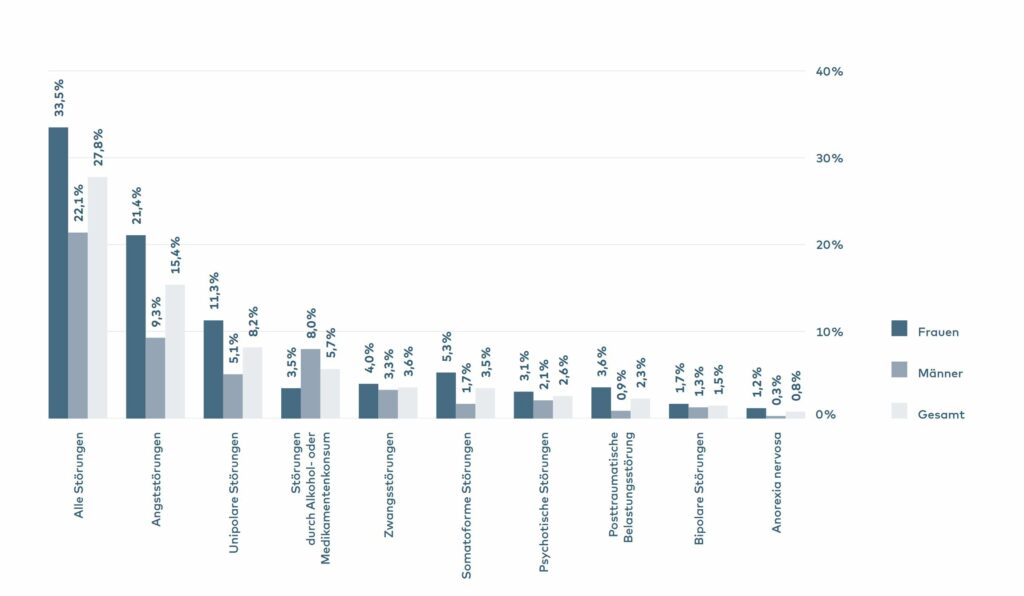Mental health problems can severely affect a person’s quality of life as well as their ability to cope with school, work or family tasks. This can also lead to physical and serious social problems.
Mental health has never occupied as much space as it does today. Even in politics, this topic is now openly discussed. In medicine, psychology, health policy and health insurance, it is generally known that mental health is the basis of a healthy life and thus a healthy society. However, mental illnesses are still associated with strong fears and stigmas, which presents a paradox in itself.
Mental illnesses are widespread diseases. More than one in four adults in Germany has the characteristics of a pronounced mental illness. Differences in the frequency of mental health problems can be observed, especially among the sexes, different age groups and socioeconomic milieus. It is assumed that only a few of those affected actually seek professional help. In recent decades, however, the number of treatments has been increasing rapidly.
Per year, more than
one in four adults meets
the criteria of a mental illness.
Frequency of mental illness
Epidemiological studies in Germany show that 27.8% of the adult population is affected by a mental illness every year. This is equivalent to the population of North Rhine-Westphalia with 17.8 million people. In Europe as a whole, the number of affected people is estimated at 164.8 million. Thus, mental disorders can be compared with other widespread diseases such as high blood pressure. According to the “Study on Adult Health” and its supplementary module “Mental Health” (DEGS1MH) of the Robert Koch Institute, anxiety disorders, affective disorders – which include depression – and disorders caused by alcohol or medication use are among the three most common types of illness. About half of those affected suffer from more than one disorder, with the combination of anxiety and affective disorders being the most common.
Comparing the figures of this representative survey with those of a previous study from 1998, it cannot be stated that mental illnesses have increased altogether. Nevertheless, health insurance data from the last 20 years show a noticeable increase in diagnoses, treatments and sick days due to mental illness. This contrast of facts derives from the change in the importance of mental health in our society. Mental disorders are now recognized as such due to an increasing sensitivity, a growing impairment due to the individual consequences of the disorder as well as more and better therapeutic offers, and the number of diagnoses is approaching the actual number of people suffering from disorders.

differentiated by gender